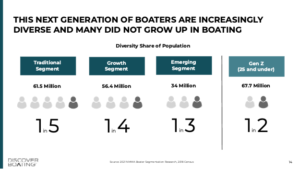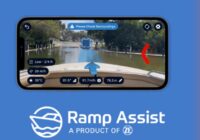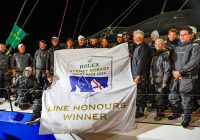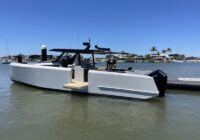Taking a look at your audience is imperative in the successful process of bring products to market. Whilst consumer studies locally are limited, it is interesting to read the work done by our American counterparts. We believe we do have similarities in buying habits, but also acknowledge the demographic differences. Never-the-less, reading and understanding how they look at their market can only help us broaden our minds as to what we need to be looking for. This is what they said.
The Future Does Not fit Into the Containers of the Past
To be successful in today’s competitive marketplace, businesses must understand how to market to each generation and what motivates them. There are four major generational shifts happening in society today: Generation Z (born 1997 – 2012), Millennials (born 1980-2000), Generation X (born 1965-1980) and Baby Boomers (born 1946-1964). These groups have things in common as well as some key differences.
Today’s boat owners are whiter, wealthier and more male than America as a whole
They’re older than the average American, with a median age of 54 and are six years older than the US median age. They are high-income and high net-worth compared to the average American and more likely to be male than the average American and much more likely to be white (92%) than the average American.
Demographic trends show that the Next Generation of boating prospects will most likely be more diverse and less likely to come from boat owning families than previous generations.
NMMA’s Kevin Williams guest blogger for MRAA on Next-Gen Customers
This diversification is even more pronounced among younger generations, with the “post millennial” generation predicted to be “the most diverse, best educated generation yet. “ The future of boating will not look like the past. So, it’s imperative for the boating industry to appeal to a younger, more diverse group of potential future boaters to show them how boating can include them.
But, to include them, you must first understand them.
- Understand Next Generation consumers in real-time
- Identify new opportunities brought about by new needs and wants
- Scale with technology to extend business reach
- Enhance capabilities to find and act upon new opportunities in a pre-emptive way – look into the future
- Invest in human capital to get it done Customers & Consumers create brands
- Today more than ever!
- Yesterday: interruption, one-way, follow the leader
- Today brands must involve consumers, connect with them, own, share, advocate (remember … the consumer decides)

Rebooting the business to realign it with the new consumer environment is critical to its long-term health & growth
NMMA commissioned a research study to find the groups to target who will be open to boating throughout the broader society. We developed a segmentation study of the potential target universe using two factors: participation in sports and outdoor activities and income.
This study defined potential target groups based on their participation in the same outdoor activities that boat owners often pursue. This allowed us to target a much larger base of future boaters with interests that overlap with today’s boat owners.
Three key segments emerged from the research: Traditional Boaters, Growth Segment and Emerging Segment. The Traditional Boaters are who their name suggests — they most closely resemble the current boat owner, while the Growth and Emerging Segments are opportunities to expand the market for recreational boating, representing 91 million people and more than 1.5x the Traditional Boater segment size.
Traditional Boaters: This group looks most like today’s boat owners and has the highest penetration of boat ownership and participation in boating activities. They are older and more suburban/ex-urban than other groups.
Growth Segment: This group pursues boating-adjacent activities at high rates, including powersports, biking and hiking and is younger. In fact, they are younger than current first-time boat buyers. They are more ethnically and racially diverse and more likely to live in denser areas.
Emerging Segment: This group is a large, dynamic and affluent segment of the potential future boat owner population. In their daily lives, while they are not pursuing the outdoor activities predictive of future boating, they are doing those activities on vacation with a potential “pull” via rental activity. They are the most diverse, most affluent segment.
Shared characteristics of the Growth and Emerging Segments include:
- Likely to attend events like auto shows, food/beverage festivals and music festivals.
- Consider themselves more environmentally conscious.
- Are heavy users of social media including Instagram, YouTube, LinkedIn, TikTok.
- Enjoy foreign and domestic travel.
- Participate in outdoor recreation activities, including golfing, cycling, running, tennis and yoga.
- Watch sporting events online.
- Own autos from brands including BMW, Jeep, Tesla and Subaru.
Lastly, the Next Generation of boaters are not a large monolithic group. Each generation is valuable in the marketplace, and one is not better than the other. Generation Z and Millennials for example are disrupting the way products and services are advertised by rejecting conventional marketing methods. They are more likely to be swayed by what their peers have to say about a product or service, which means that digital and social media sources such as Yelp reviews and online testimonials can make or break marketing campaigns.
Engaging diverse consumers as buyers and employees for instance is simply a good business strategy. Targeting potential boating lifestyle enthusiasts from the three largest ethnic groups in the US (African American, Asian and Hispanic), as well as women and LGBTQI audiences is essential to the growth of the boating industry. What’s more, these segments will only grow in importance in the years to come as their buying power increases. There is enormous potential to market to these consumer groups in almost any sector and industry, and with a focus on reaching and engaging them where they live, work and play digitally and experientially.
About the Author

Kevin Williams is the Vice President, North American Marketing for the National Marine Manufacturers Association. He has more than 25 years of marketing experience, and most recently co-founded Fortitude Interactive Inc., a marketing technology consulting firm focused on brand strategy, content development and syndication, as well as intellectual property in the digital, social and mobile age.
He has also served as head of multicultural marketing and diversity and inclusion initiatives for BMW of North America, LLC., where he facilitated multicultural marketing strategies and initiatives designed to reach, engage and motivate diverse consumers for BMW, MINI Cooper and BMW Motorrad brands.











